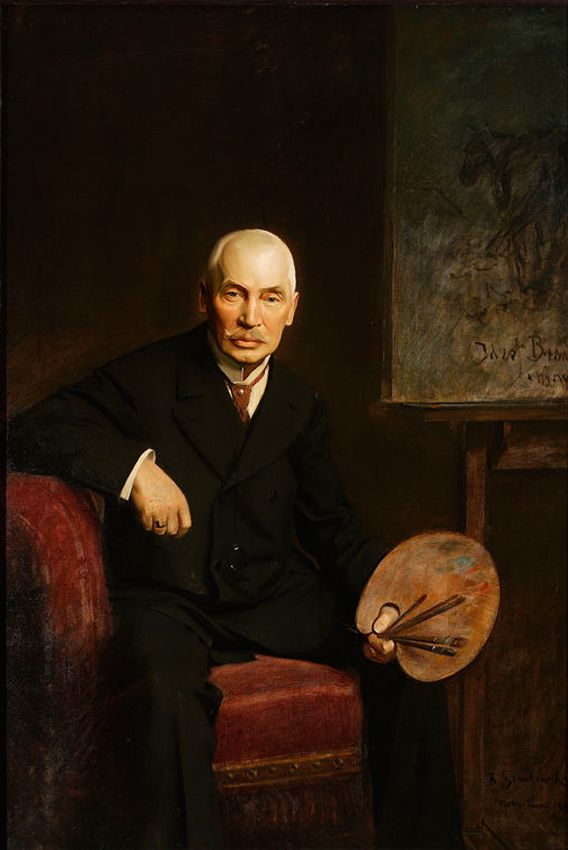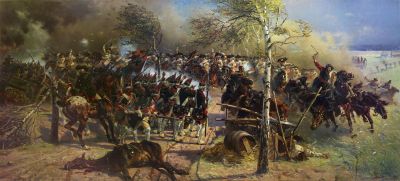Józef Brandt
Mediathek Sorted
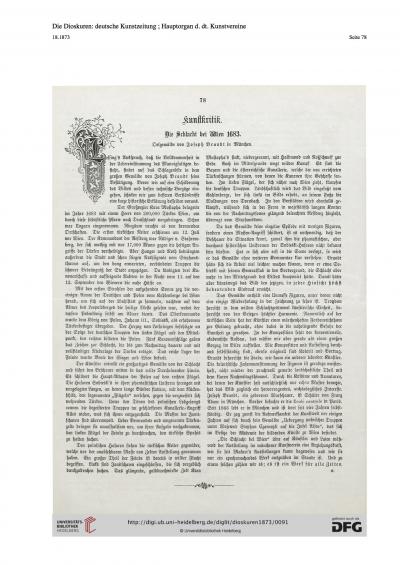
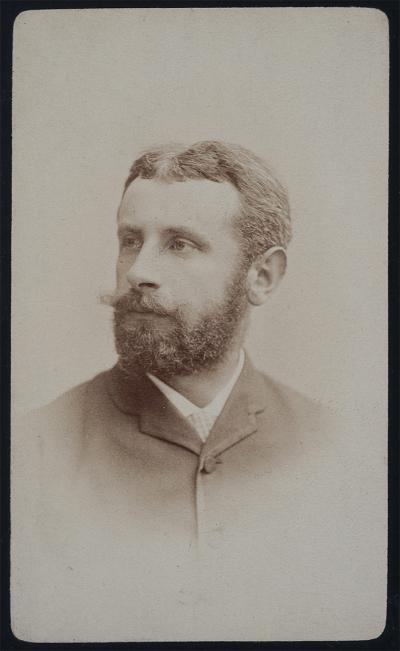
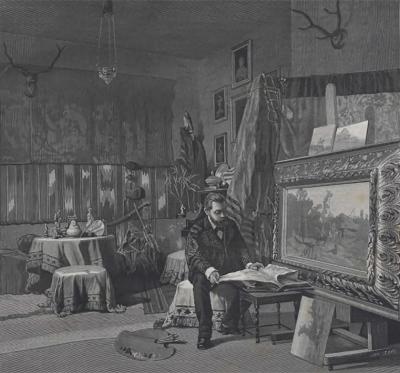
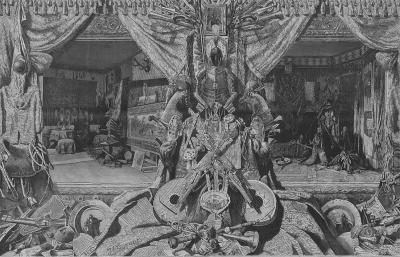
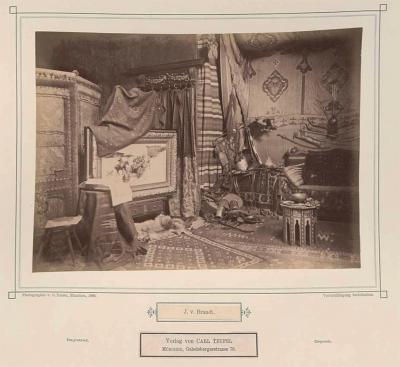
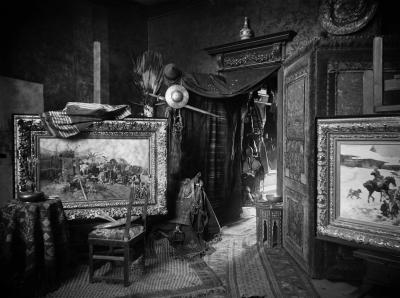
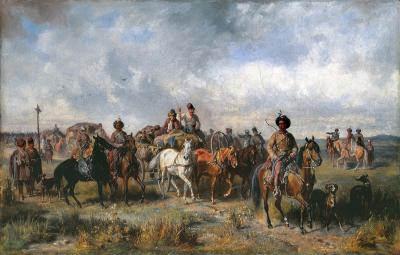

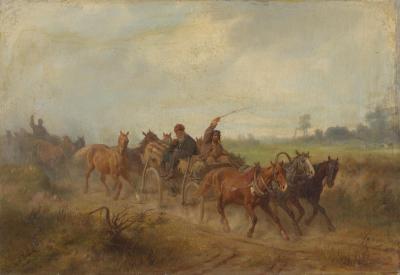
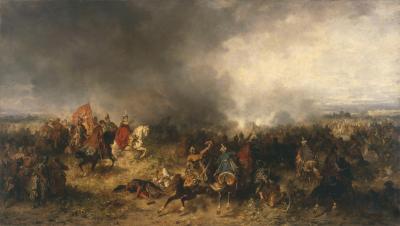
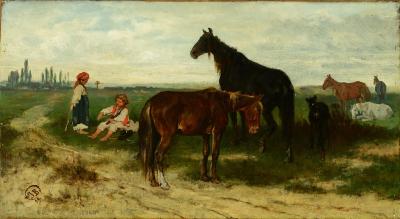
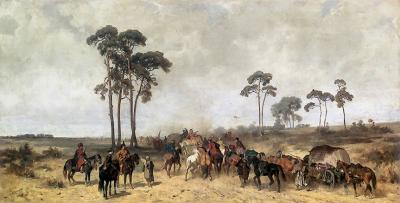
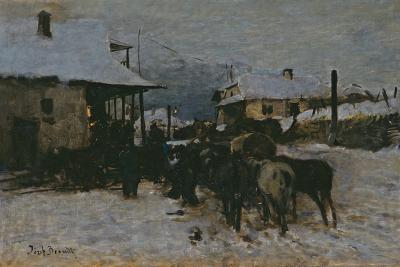
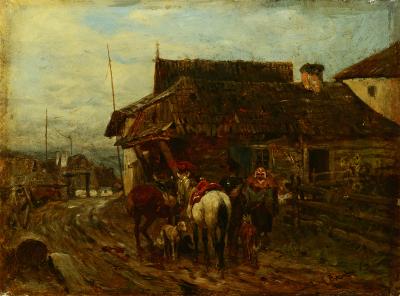
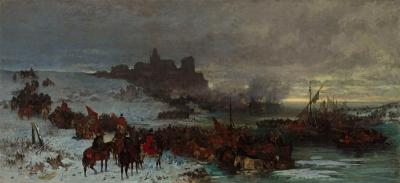
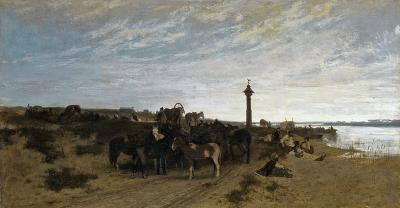
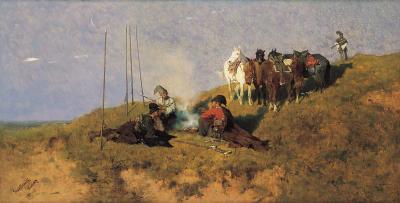
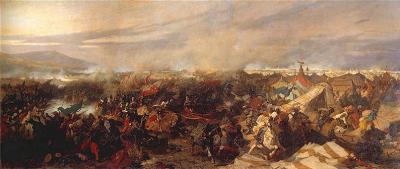
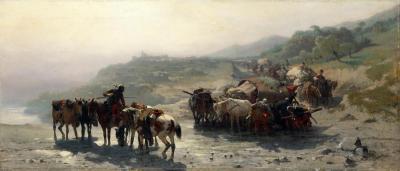
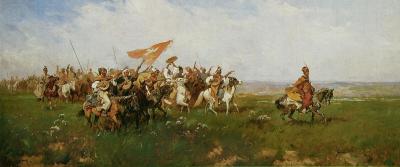

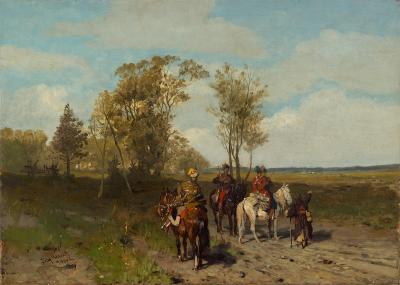
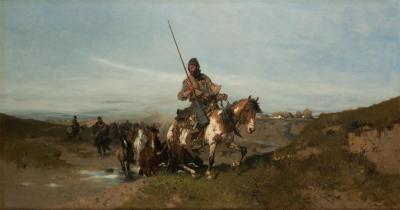
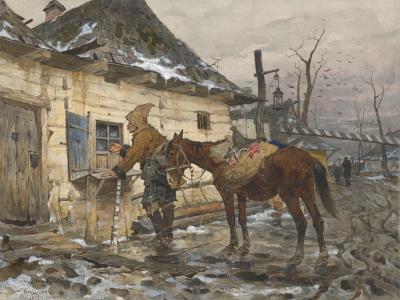
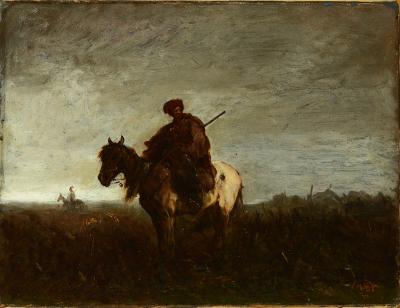
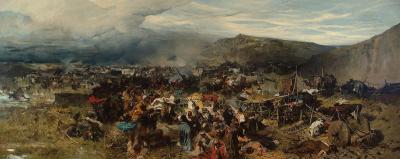
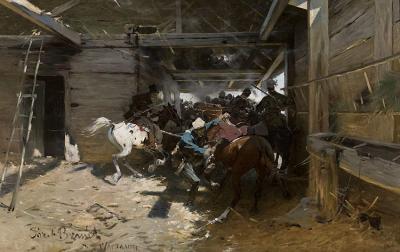
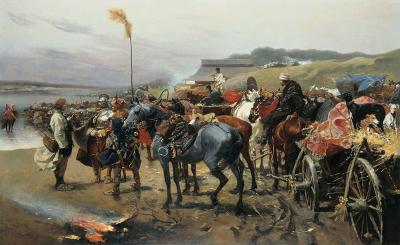
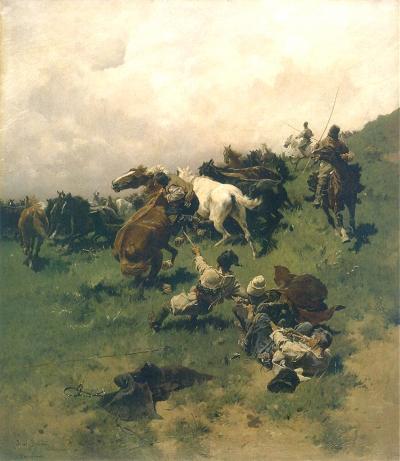
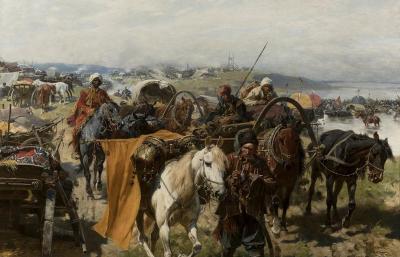
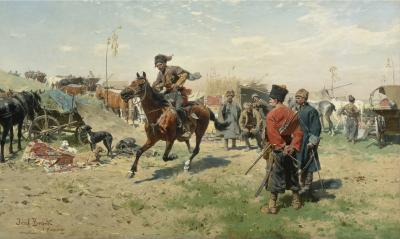
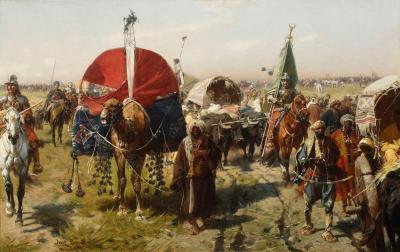

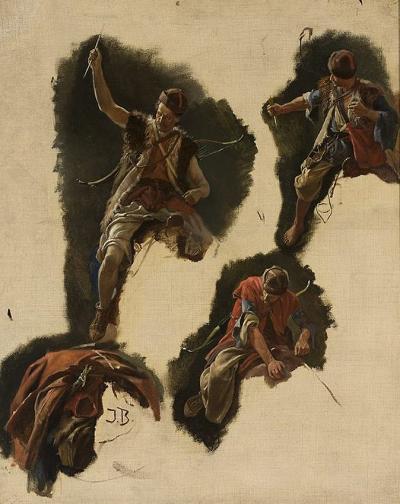
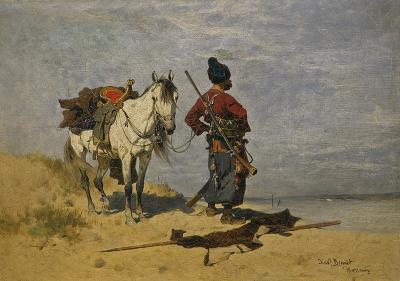
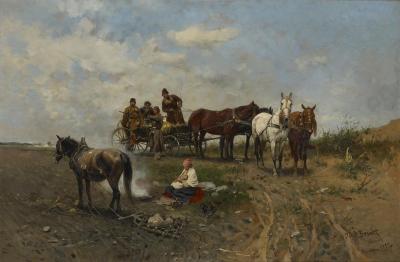
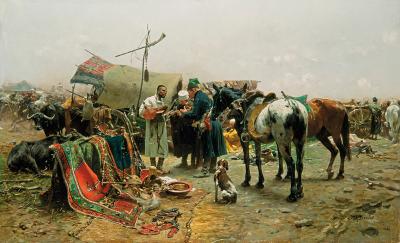
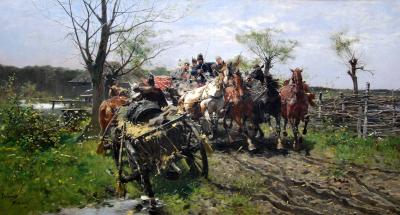

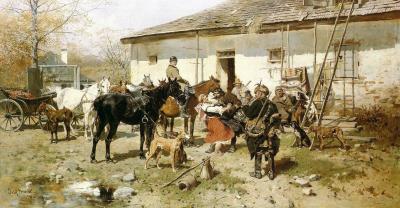
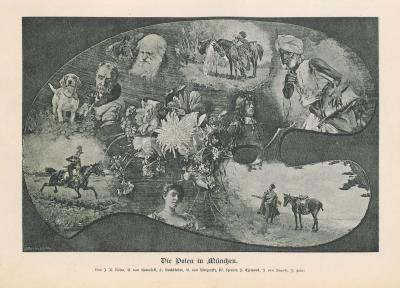
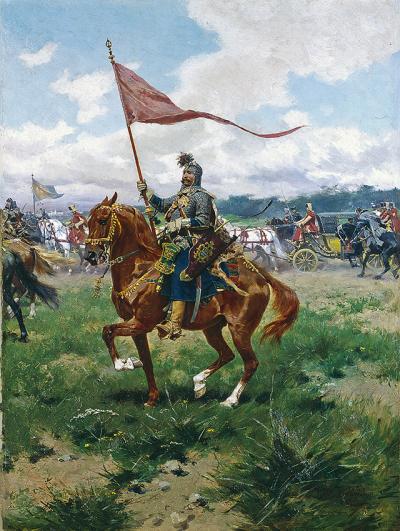
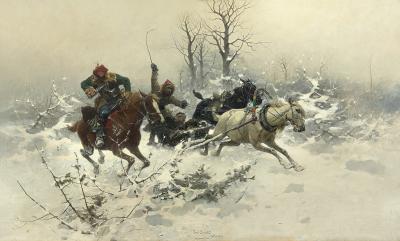
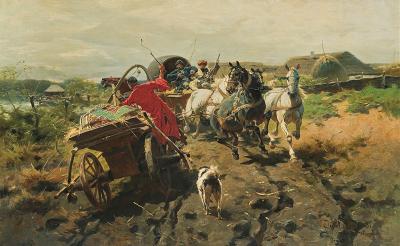
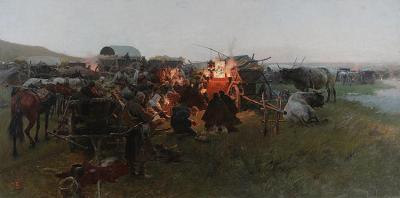
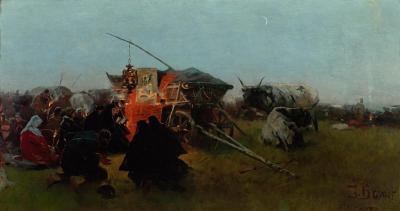
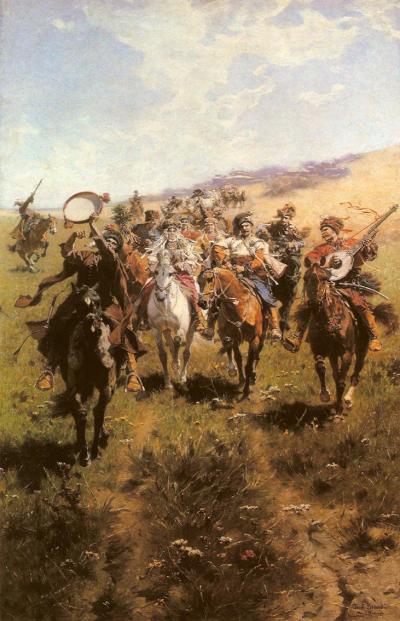
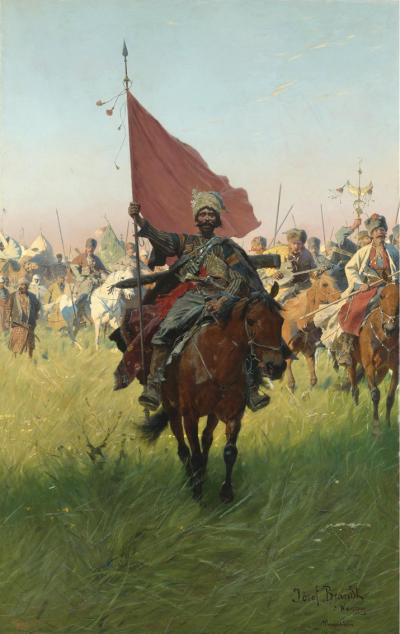
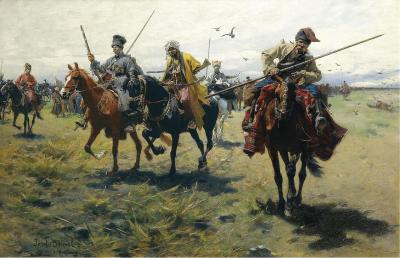
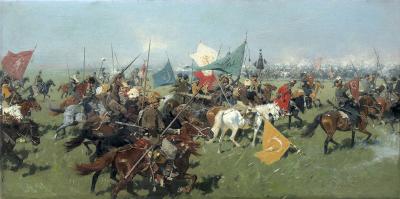

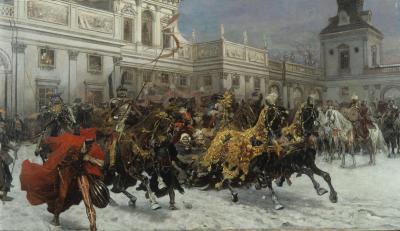
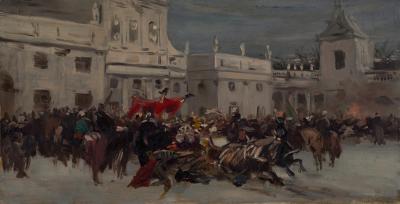

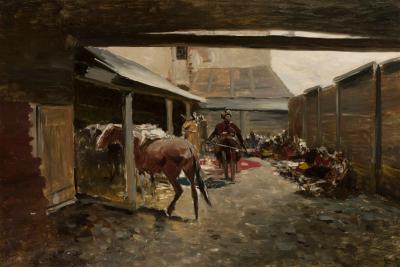
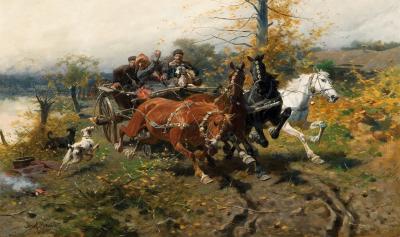
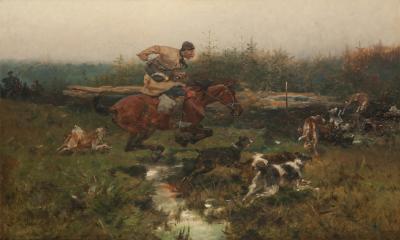
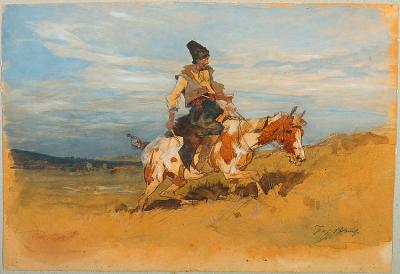
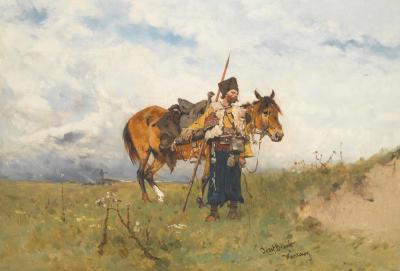
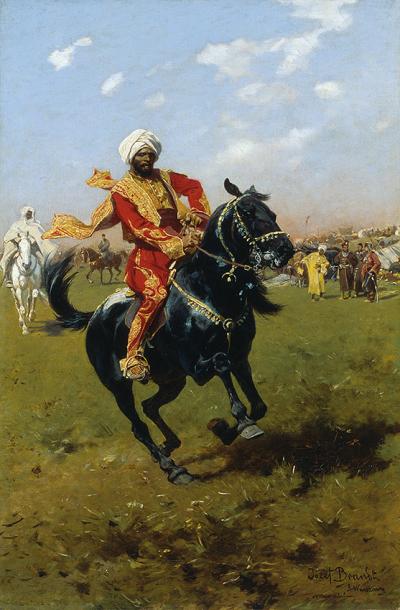
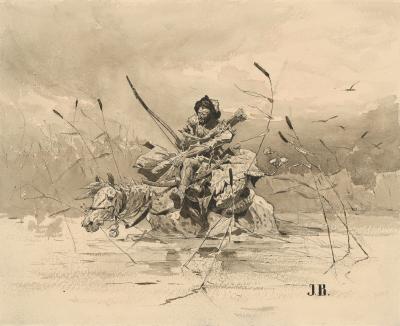
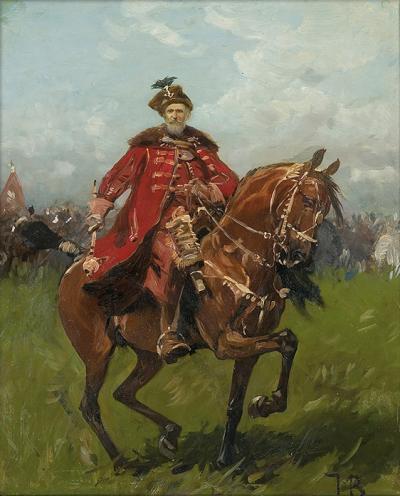
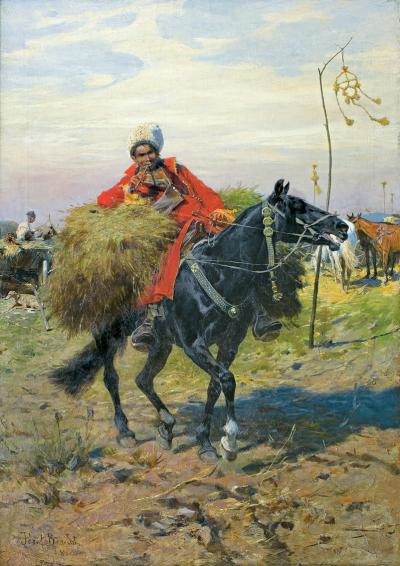
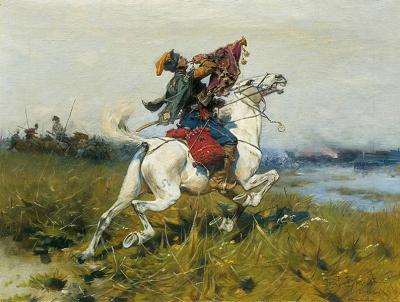
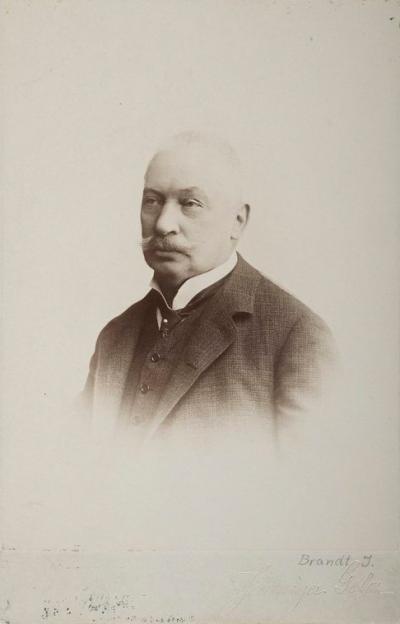

Nor was Brandt interested in heroic acts or the glorification of historical events, as is the case with other German history painters. In addition to the detailed depiction of the landscape (fig. 21), he was particularly interested in the everyday life of the soldiers: the arduous journey of a cavalry on the return from the battle of Vienna (1869, fig. 11), a break by the campfire (1873, fig. 16), or a patrol by the river (1873)[42]; a Cossack's lonely night watch (1878, fig. 24), a small skirmish with the Swedes in a dramatic forest landscape (1878)[43], and also picturesque scenes like that in “A Raid by the River” (1874, fig. 18), which featured uniforms and head coverings. They include all kinds of horses, a packed wagon stuck in a river bed that needs to be set free, and breathtaking perspectives. Flags, lances and wildly beaten musical instruments enliven a welcoming procession of Cossacks on the steppe (1874, fig. 19). Brandt's interest in picturesque details went far beyond the folkloristic genre cultivated by his fellow German painters.
Brandt not only painted small and medium format works. In the follow-up to the "Battle of Chocim" (fig. 8), he also created monumental wall-filling paintings at lengthy intervals. These included the battle scenes "Czarniecki in the Battle of Kolding" (1870), the "Battle of Vienna" (1873) and the "Liberation of the Prisoners" (1878), as well as the - now lost - wall-filling painting "Market in Balta" (1875). Here it must be added that the artist occasionally changed the width of his canvases by one metre to four metres. The "Battle of Kolding" (fig. 14) depicts an event from the Second Nordic War, during which Polish troops under the leadership of the commander Stefan Czarniecki (1599-1665) came to the aid of the Danes who were under attack from Sweden. In December 1658 the Polish forces conquered the island of Alsen and finally Kolding Castle. Here too, Brandt does not depict a heroic victory. Instead, he portrays the efforts of the soldiers, who are trying to reach the snow-covered shore from their ships in the Koldingfjord.and from there to get to the top of the castle hill with their horses. The picture is dominated by red uniforms, flags and horse blankets against an atmospheric background consisting of the castle and a snowy fjord landscape on a freezing, misty winter morning.
The "Battle of Vienna" (1873, fig. 17) shows the allied German-Polish army led by the Polish King Jan III Sobieski (1629-1696) attacking the Turks on 12th September 1683, after the Austrian capital had been under siege for months and faced capitulation. The painter dramatically illuminates the right half of the scene, with Turks in colourful uniforms fleeing from the attacking Polish hussars who have overrun their tents. The painting was shown in its year of origin at the Vienna World Exhibition 1873[44] and subsequently in the rooms of the Munich Art Society, where it was greeted with extensive, enthusiastic reviews. The newsletter of the German art associations, "Die Dioskuren", wrote that the painter had earlier drawn attention to himself with his painting "Polish troops under Vojewod Stephan Czarnetzki crossing to the island of Alsen", which has now passed into the possession of the Academy of Fine Arts in Vienna. "The Battle of Vienna" now exerts an attraction on both artists and laymen[...] the like of which has been virtually unheard of since Makart's exhibitions. This is something of which only an epoch-making work is capable. And we count it as such; it is a work for all time.“[45] (see PDF)
[42] Zwiad Kosacki, 1873. Oil on canvas, 42 x 83 cm, Upper Silesian Museum, Bytom/Muzeum Górnośląskie w Bytomiu
[43] Potyczka ze Szwedami, 1878. Oil on canvas, 90.8 x 171 cm, National Museum in Breslau/Muzeum Narodowe w Wrocławiu
[44] The world exhibition in Vienna, 1873. Officieller Kunst-Catalog, Wien 1873, page 154; Digital version: http://digi.ub.uni-heidelberg.de/diglit/weltausstellung1873/0158 (called up on 20.11.2017)
[45] Author unknown. Review. Die Schlacht bei Wien 1683. Oelgemälde von Joseph Brandt in München, in: Deutsche Kunst-Zeitung Die Dioskuren, Jahrgang 18, Nr. 10, Berlin 1873, page 78; Digital version: http://digi.ub.uni-heidelberg.de/diglit/dioskuren1873/0091 (called up on 20.11.2017)





















































































